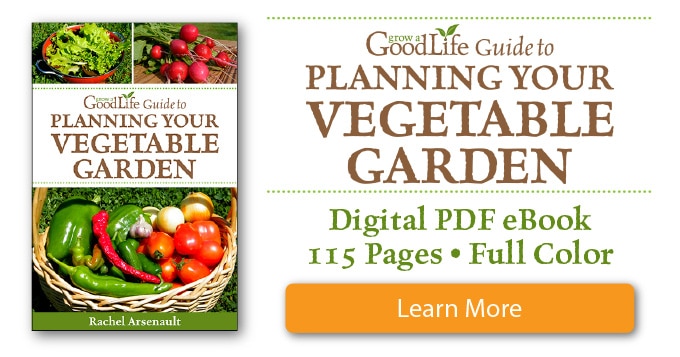Leaf Mulch: How to Use Shredded Leaves in the Garden
This post may contain affiliate links, which means that I may receive a commission if you make a purchase using these links. As an Amazon Associate I earn from qualifying purchases.
Turn fall leaves into free, organic leaf mulch. Learn how to use leaf mulch to improve your garden soil, suppress weeds, and grow healthier vegetables.
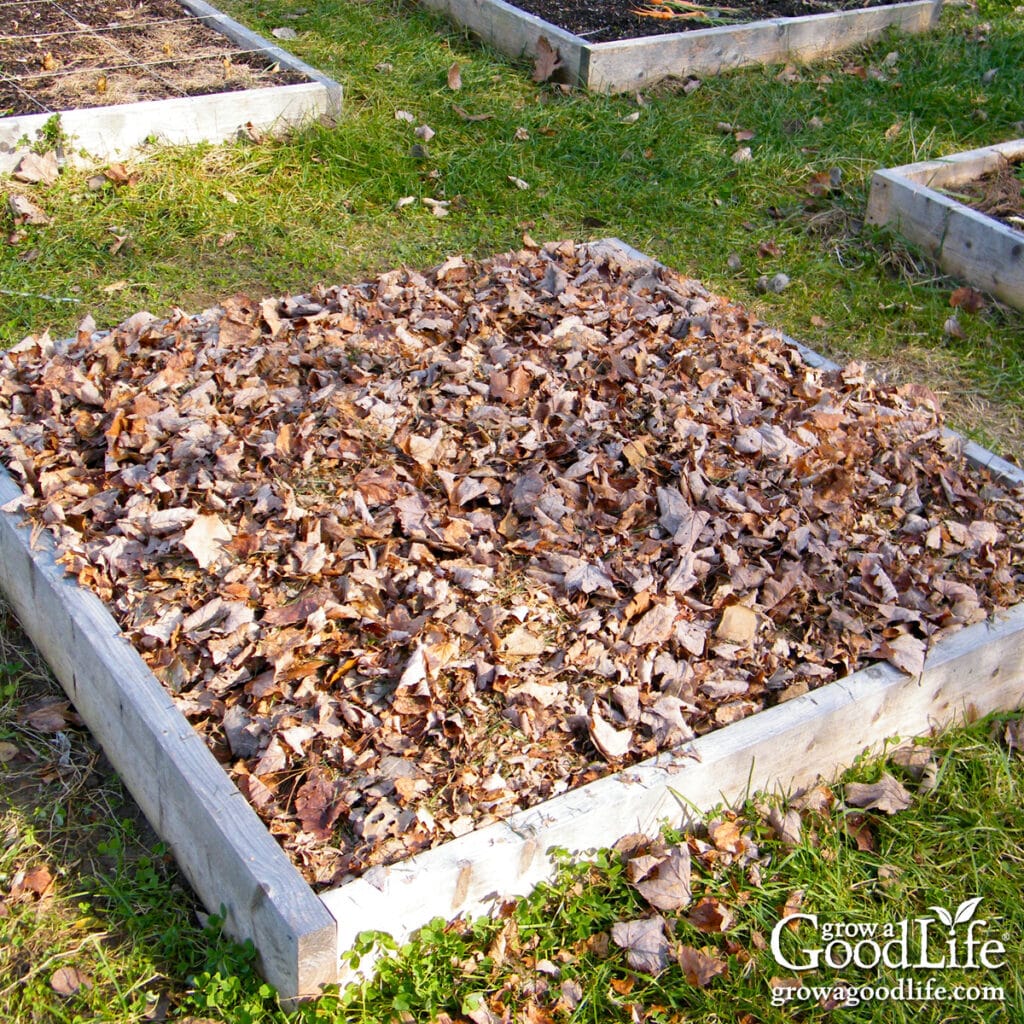
While my neighbors are out every weekend blowing leaves into piles or raking, bagging, and hauling them away, I’m doing the opposite. I let the leaves pile up, then run over them with my mower and bagger to gather and shred them into a perfect garden mulch. Not only does it save me time and effort, but it turns a yard waste problem into a rich, free resource for my vegetable beds.
I first discovered the benefits of shredded leaves one fall after running out of straw. I had a huge pile of leaves in the backyard, so I chopped them up with the mower and spread them over my garlic bed. The following spring, my garlic was pushing through a crumbly, dark layer of organic matter. That’s when I realized I had been overlooking one of the best (and cheapest) mulches available.
The next year, I tried skipping the shredding step and simply raked whole leaves over my garden beds. That experiment didn’t go as well. Whole leaves can mat down into a dense layer that blocks water and air from reaching the soil, and in windy spots, the dry leaves tend to blow away. Lesson learned: Shredded leaves are far superior.
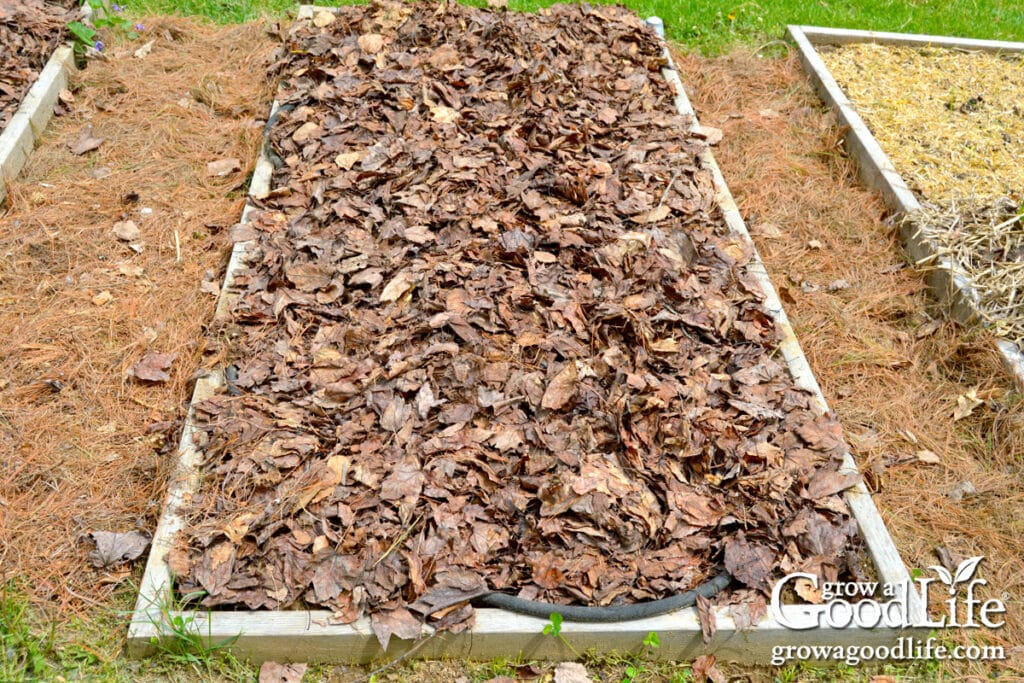
Now, every fall, I mow and gather the leaves from my yard, chopping them into fine pieces that stay put, let moisture pass through, and break down much faster than whole leaves. I collect enough to mulch my vegetable beds and still have plenty left to start a leaf mold compost pile for future use.
It’s one of the easiest, most cost-effective ways I’ve found to protect my soil, cut down on weeds, and improve my garden year after year using a resource my neighbors are throwing away.
Benefits of Leaf Mulch in the Garden
Over the years, fall leaves have become one of my favorite mulches. Like other organic mulches, shredded leaves help:
- Weed suppression: A thick layer blocks light from reaching weed seeds.
- Moisture retention: Helps keep the soil evenly moist by reducing evaporation.
- Temperature moderation: Insulates the soil, keeping it cooler in summer and warmer in fall.
- Soil enrichment: Breaks down into valuable organic matter and nutrients that feeds soil life.
Best of all, they are lightweight, easy to spread, renewable, and available every fall, making them one of the most sustainable mulch options for the organic vegetable garden.
How to Shred Leaves
You don’t need fancy equipment to turn a pile of leaves into a fine, garden-ready mulch. Here are the easiest ways to get the job done:
- Lawn mower: The quickest and most accessible method for most gardeners. Use a mower with a bag attachment to collect and shred leaves in one pass. If you don’t have a bagger, mow over the leaves several times to chop them, then rake them up.
- Leaf shredder: A specialized tool designed to chop large amounts of leaves quickly and evenly. This is ideal if you have a big yard or collect leaves from multiple sources.
- String trimmer in a trash can: Place leaves in a large, sturdy trash can, insert the string trimmer, and move it up and down to shred. This method works well when you want to shred leaves without spreading them all over the lawn.
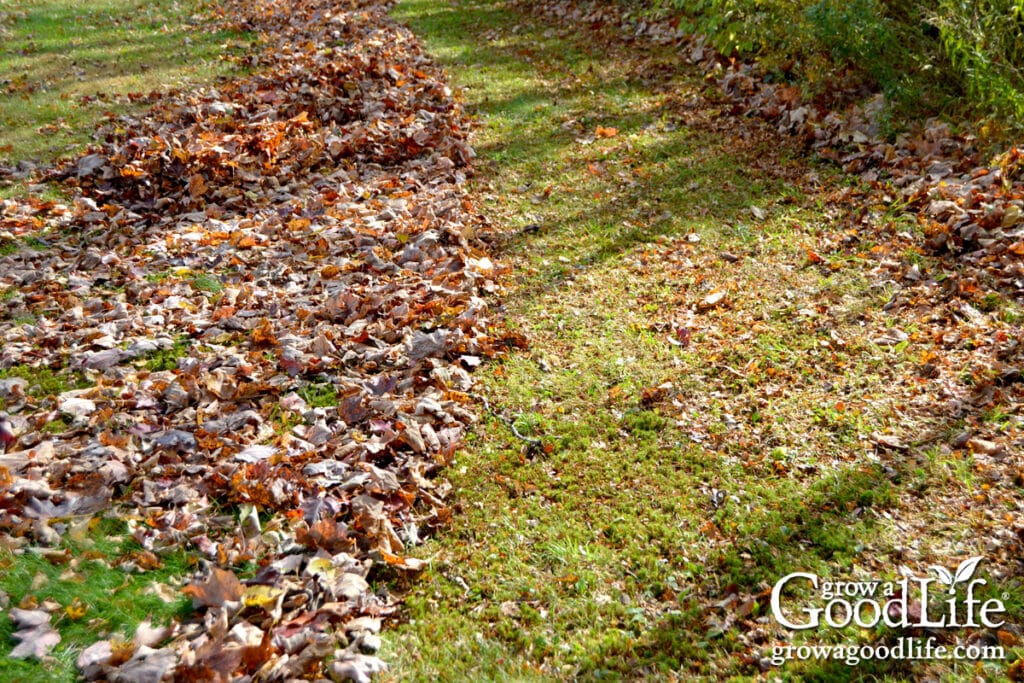
How to Apply Leaf Mulch
Shredded leaves can be applied in both fall and spring, depending on your goals. In the fall, mulching after garden cleanup protects bare soil from erosion, retains moisture, and allows the leaves to begin breaking down over winter. In spring, wait until the soil has warmed and dried out a bit before adding mulch, as applying too early can keep the ground cooler and wetter than desired.
Once the timing is right, here’s how to get the most from your shredded leaf mulch:
- Prepare the soil: Wait until after a good soaking rain, or use a hose and water beds thoroughly before adding mulch.
- Spread evenly: Apply shredded leaves in a 3 to 6 inch layer around your plants. For larger crops like tomatoes, peppers, and squash, a thicker layer (closer to 6 inches) provides better weed control.
- Leave a gap: Keep mulch 2 to 4 inches away from plant stems to prevent rot and discourage pests. This gap also makes it easier to deliver water directly to the plant’s roots when watering.
- Fluff: If leaves start to mat down, fluff them occasionally with a rake to restore airflow and water penetration.
- Replenish as needed: Add fresh layers during the growing season or after harvest to maintain coverage and soil benefits.
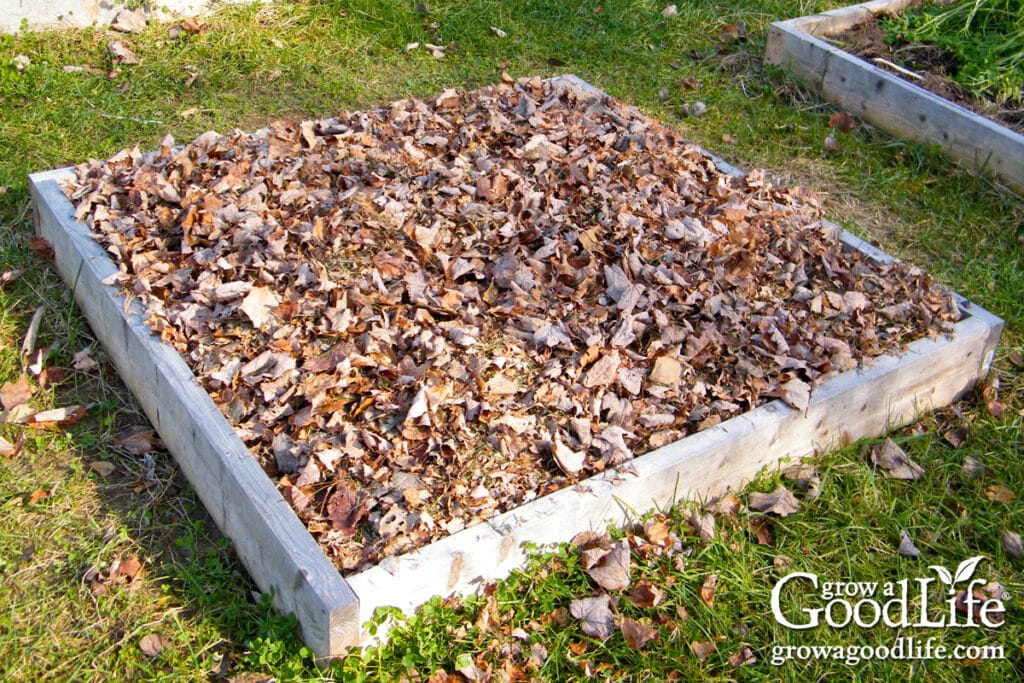
Potential Issues and How to Avoid Them
While shredded leaves make an excellent mulch, there are a few potential issues to watch for:
- Soil not freezing in winter: A very thick layer of leaf mulch can act as insulation and prevent the soil from freezing. Freezing temperatures help kill off many soil-borne pests and fungal diseases. If you’re in a cold climate, avoid piling leaves too deeply in fall so the ground can freeze naturally. Wait until the ground has frozen before adding a thick layer of mulch.
- Delayed spring warming: A deep pile of leaf mulch can also keep the soil cool in spring, slowing the thawing process and delaying planting. To speed warming, rake mulch aside in early spring to let the sun reach the soil, then replace it once the ground has warmed.
- Wind: Because shredded leaves are lightweight, they can blow away in strong gusts, especially when freshly applied. Water the mulch after spreading to help it settle, or mix it with a heavier mulch like compost to keep it in place.
- Matting in wet conditions: Wet leaves can mat together, blocking air and water from reaching the soil. To prevent this, use shredded leaves, apply in moderate layers, and fluff occasionally with a rake to maintain airflow.
- Nitrogen tie-up: A common concern with high-carbon mulches like leaves is nitrogen tie-up, which happens when soil microbes use nitrogen to break down organic matter. This is only a problem if you mix the leaves into the soil. To avoid it, keep shredded leaves on the surface as mulch so they decompose gradually without competing with your plants for nitrogen.
- Slugs: In damp, cool weather, slugs may shelter under mulch and nibble tender seedlings. Check plants regularly and pull mulch back a bit if slug damage becomes an issue.
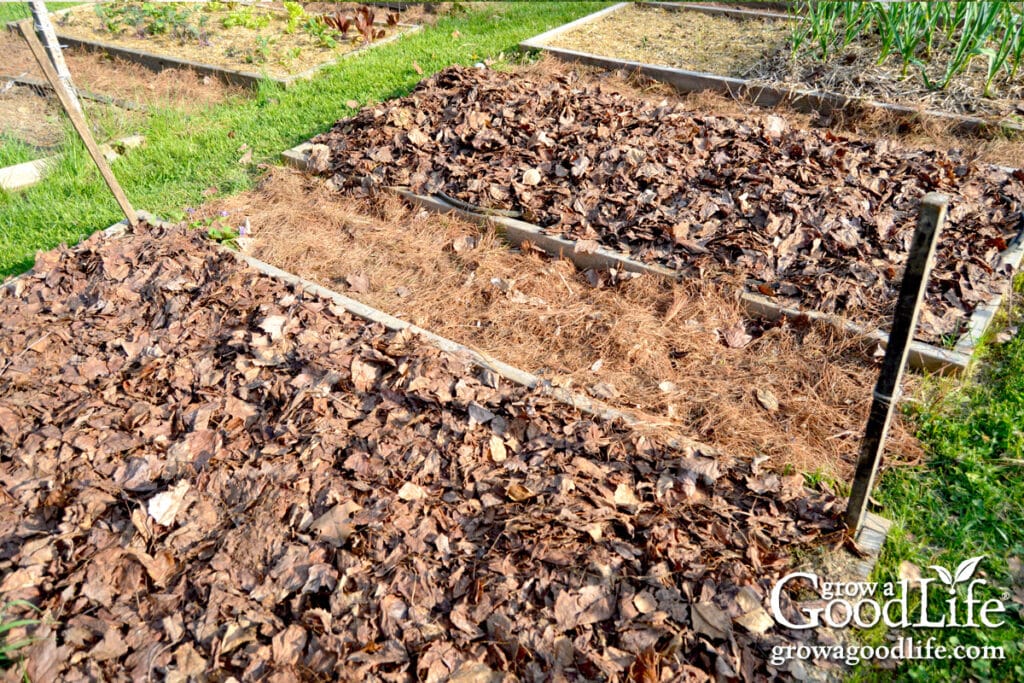
From Fall Leaves to Garden Gold
Shredded leaves are one of nature’s best mulches. They are free, organic, and full of benefits for your garden. By collecting and repurposing your own leaves each fall, you can protect your soil, feed it with organic matter, and keep weeds in check without spending a dime. Once you see the results, you may find yourself looking forward to leaf season as much as I do.
While shredded leaves work wonderfully as mulch right away, they can also be transformed into leaf mold compost, a rich, crumbly amendment that improves soil structure and moisture retention. Check out this article to learn more: How to Make Leaf Mold to Improve Your Soil.
If you’re looking for more mulch inspiration, explore these helpful resources:
Good planning is key to a successful vegetable garden.
Whether you are new to growing your own food or have been growing a vegetable garden for years, you will benefit from some planning each year. You will find everything you need to organize and plan your vegetable garden in my PDF eBook, Grow a Good Life Guide to Planning Your Vegetable Garden.

